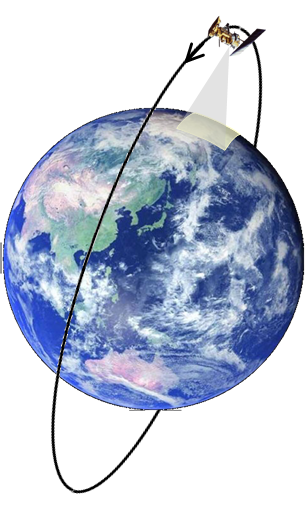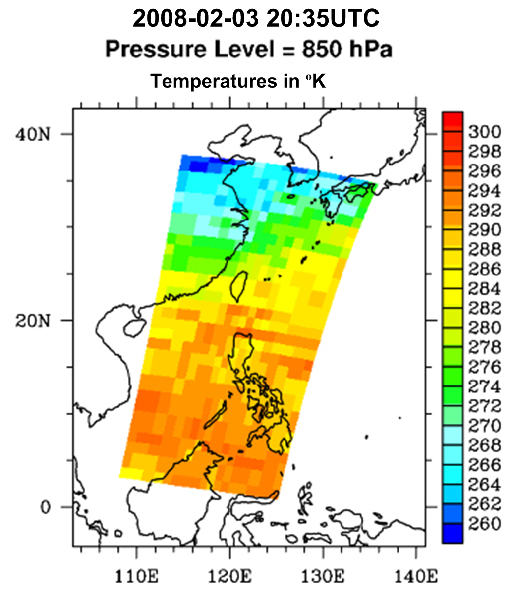Hong Kong Observatory Participating in Asia-Pacific Satellite Data Re-transmission Services
|
The Hong Kong Observatory joined the Asia-Pacific satellite data re-transmission services in March 2008, sharing satellite data with other meteorological services in the region. Satellite data is one of the important sources of data for numerical weather prediction models. The Observatory implements a satellite reception system to directly receive weather data collected by polar-orbiting satellites (Fig. 1). The area of coverage of these data is the region where the satellite "sees" while flying overhead Hong Kong (Fig. 2). Usually, polar-orbiting satellites distribute data collected after circling around the globe. Since it takes some time for the satellite to complete its cycle, the satellite data can only be received a few hours later. In view of this, the World Meteorological Organization establishes the regional satellite data re-transmission services in the Asia-Pacific region. This facilitates prompt exchange of satellite data collected at locations with direct reception of the satellite data, obviating the need to wait for the satellite data after the satellite completes its orbit around the globe. The re-transmission services provide a means for weather services in the region to get access to satellite data over different areas. The satellite data re-transmitted by the Observatory to other meteorological services in the region include temperature data at various altitudes collected by the United States NOAA-series of polar-orbiting satellites (Fig. 2). As compared with upper air weather data collected by balloons, the satellite data is higher in spatial resolution and covers the vast oceanic areas. This has positive impact in improving the performance of numerical weather prediction models. |
Fig.1: The polar-orbiting satellite collects meteorological data while revolving around the Earth. |
Fig.2: Temperature data received from NOAA-16 polar-orbiting satellite. |

